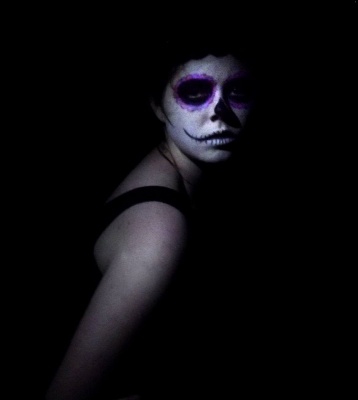NECROPOLIS
05/02/2014 - 09/02/2014
Production Details
What happens in death? Where do you go? Necropolis: the city of the dead, in this play the journey of a newly deceased girl is displayed, and we watch as the world unfolds around her and she begins to bloom.
19 Tory St
9pm, 5-9 Feb (90min)
FREE / KOHA
Theatre ,
1hr 30mins
Admirable ambition
Review by James McKinnon 06th Feb 2014
I deeply admire the courage of the Tea Leaf Soldiers, producers of Necropolis. No matter how much training you get in acting or directing or scenography or whatever, the only way to learn how to “do theatre” is to do theatre. Fortunately the Wellington Fringe still provides an excellent place to learn by doing (not all Fringes do) but it still takes a lot of courage and energy to go out and make a show all by yourself. When was the last time you chose, without the promise of being paid or graded, to invest your time and money into making something new and inviting the public to judge it?
Necropolis – ‘city of the dead’ – is a story about going to hell and back again. Many cultures have stories about escaping from the underworld alive, and Necropolis acknowledges the universality of this fantasy by fusing the Greek and Aztec visions of the underworld to depict a conflict between Persephone and Tlaloc. In addition, the story is mostly told in poetic verse, which is sort of like writing a Petrarchan sonnet about Wolverine courting Lt. Uhura in Gotham City. In other words, Necropolis is, both conceptually and verbally, an ambitious undertaking (hah!).
Unfortunately, Necropolis’s ambitions are more admirable than successful. The play – like any play that combines poetic language, characters drawn from classical mythology, and metaphysical inquiry – needs us to use our imagination to soar above and beyond the material world, but Necropolis’s staging relentlessly drag us back down to earth.
To transport us to another realm, the action needs to be seamless, continuous, and fluid, but this production stops every few minutes and makes us wait while the actors stop, drop character, and shuffle back and forth through the upstage curtain to noisily drag a bench or box across the floor. The constant and unnecessary interruptions dispel any illusion and we come crashing back to the sterile, fluorescent-lit concrete box that is 19 Tory Street, like when Icarus fell to earth after flying too close to Quetzalcoatl.
The constant stoppages are not just annoying but unnecessary. This kind of theatre relies on stylised or symbolic forms of expression to highlight its dramatic verbal imagery. Benches and rostra do not help us visualize the afterlife. Expressive speech and movement would be much more effective than crappy props, but in a show that needs grand, expressive gesture and vocal expression, many of the actors move and speak with the sullen, listless, daily-life energy of a teenager sentenced to do chores on a Saturday night. Many of them appear to be wearing street clothes and shoes, which is another pre-emptive strike against our capacity to imagine, and the actors were often totally overwhelmed, in terms of both energy and volume, by the sound of conversations between people walking up Tory Street just outside.
The three female principals, however, show some good performance technique at times. All three have good voices, which helps the poetry come to life, and they also benefit from good costumes and make-up (although the Burtonesque “white face, blacked-out eyes” corpse face is kind of clichéd by now).
Amanda Treick, in particular, shows the expressive skills that a show like this needs to succeed. While the other actors mostly try to tell us things, Treick’s spooky, hooded narrator character hints coyly at the mysteries we can’t see or know, thus allowing us to get our imaginations involved. The most memorable image of the play is simply her handing Persephone a beautiful glowing, blue lantern.
The central feature of the script is its poetic imagery, not its drama. At times, it sounds a little like Poe or one of the French Symbolists he unwittingly inspired. It might work as a dramatic monologue. In fact, most of the 50 minutes or so consists of monologues: characters telling us or other characters how they feel or what they plan to do, or shouting defiantly in the direction of the heavens. There is very little dramatic conflict until near the end, and by that time I had lost the plot.
Since the characters rarely interact with each other in the first part, it’s easy to miss their names, and I had a hard time figuring out what was going on or why it mattered. When it was over, I was relieved to see no Cerberus blocking my escape to Tory Street.
For all its problems, Necropolis’s ambition, imagination, and originality are admirable. I am not suggesting here that the stage is no place for symbolist poetry or mythology – I played a character called Psychopomp, once. On the contrary, I think theatre desperately needs to abandon kitchens, living rooms, and (yawn) house party dramas, and bring back poetic imagery, grand fantasy, and epic imagination.
Necropolis could do all those things, perhaps, but its makers need more experience and understanding of the techniques and skills needed to make that kind of theatre work.
Copyright © in the review belongs to the reviewer





Comments
James McKinnon February 8th, 2014
I regrettably forgot to mention the live (I think?) musical accompaniment, which is very good and helps establish a spooky ambience.